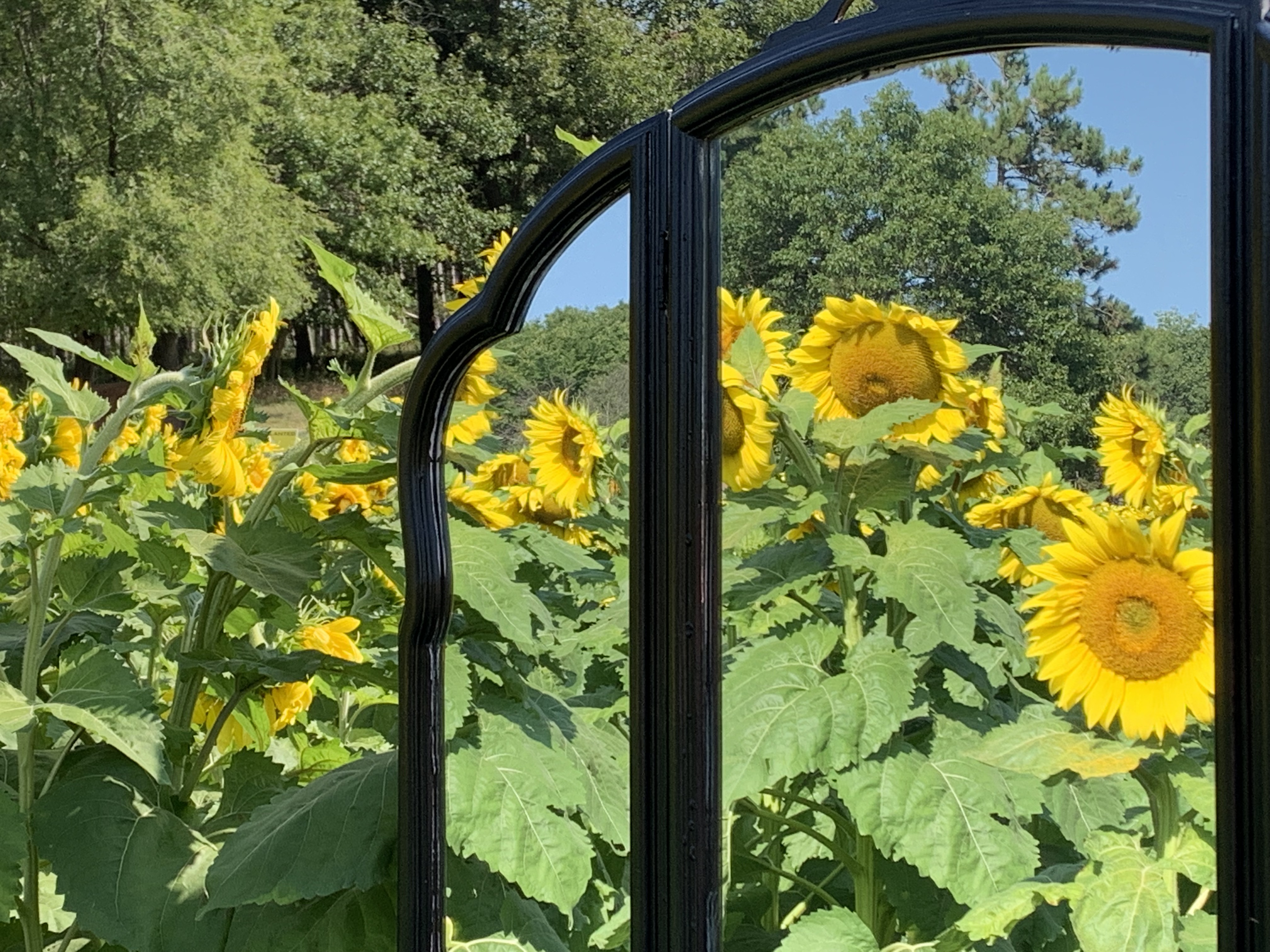
This vintage vanity chair was a dainty darling.
Just what I was looking for to replace my more conventional vanity bench. (Yes, I’m actually keeping an item for my own home finally!) But the green had to go.

Disassembly
First, I removed the old fabric. Thankfully, it was attached with nails and not staples, so it wasn’t quite as taxing on my poor wrists. But I was in for surprise…

Given its good condition, I thought this chair wasn’t too old. I may have been wrong. When I pulled off the fabric, I found what looked to be old-time horsehair stuffing! Yeah, that went right in the trash.

The Frame
After I pulled off the fabric and stuffing, I was left with just the wood frame. The springs were in great shape, so no need to replace those.

All this frame needed was wood conditioning. You can see here the difference Wise Owl® furniture salve made in conditioning and brightening the wood. The untreated portion looks so dry and dull by comparison. (For more on this salve, see Furniture Salve: From Dry to Dazzling.)

The Bling
The heavy brass handle on this chair was too ornate for my taste. So I replaced it with one that matched better with my bathroom decor. I had to change it out at this stage because the fabric installation would cover access to the screw heads.

The Bits & Pieces
I used the old fabric pieces as patterns for cutting my new fabric. Instead of stretching fabric over stuffing and stapling it in place, like my usual chairs, here a sort of “cap” covers the foam. Corded trim decorates the seams.

The old springs had burlap between where they crossed, which was a good idea to avoid squeaking! So I repeated that with scraps of my fabric. Then I stapled thin cotton batting over the springs to prevent them from cutting into my seat foam.

Since I chucked all the parts of the old back, I needed to start over with a more modern construction. I crisscrossed webbing for back support and stapled it in place.

The Assembly
When it was time to put everything together, I started by adding a thin layer of one-inch foam on the front side of the backrest and covering it with batting.

After trimming the excess batting, I stapled the fabric in place and added double welt trim to cover the staples. The trim had to be added at this stage since the seat cushion would be attached in front of the trim.

Next, I cut a piece of 2-inch high-density foam and placed it over the springs. Then I popped the new seat “cap” on and stapled it beneath the frame. Then I stapled single cord trim underneath the seat to finish off the tailored look.

After attaching the seat, I repeated the batting layer on the back and added the fabric. I was careful to keep the fabric pattern going the same direction as the seat. You’ll notice the fabric tucks under the back edge of the chair, covering all the exposed raw fabric from the front and seat. This chair was a challenge to put back together, but it was also a pleasure to see how clever the designer had been in these little touches.

The last step was to add double-welt cording with a hot glue gun to cover the staples on the seat back.

And the cherry blossoms have bloomed!
What I thought was going to be a quick fabric replacement project ended up being a more comprehensive makeover. But that’s what makes these projects interesting – learning new construction methods each time!
Send any Qs about items on my blog via my contact page and follow me on Instagram (@serendipitysequelsmn).


